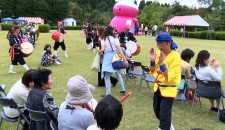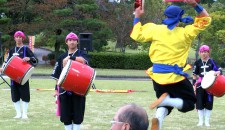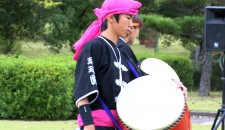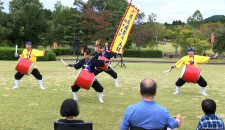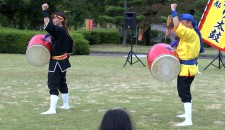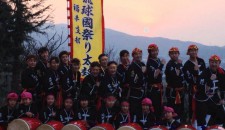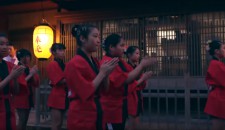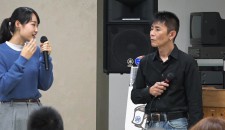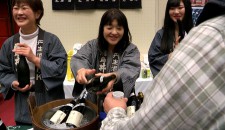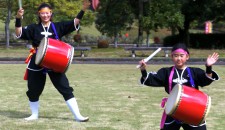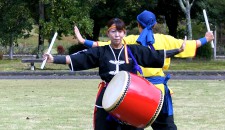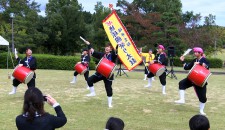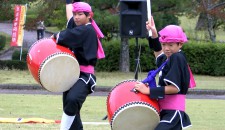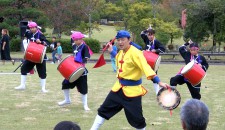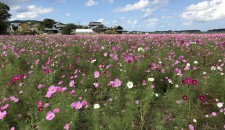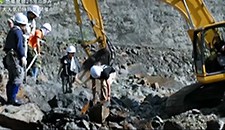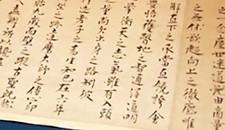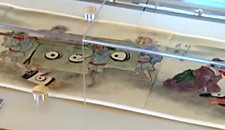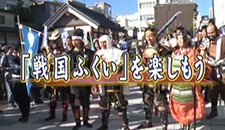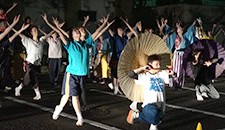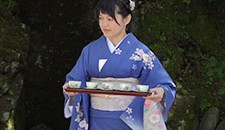Okinawa's traditional performing art: Eisa "Minatoma” by Ryukyukoku Matsuri Daiko Fukui
2019.04.21
On October 7th (Sat), 2017, the Ryukyukoku Matsuri Daiko Fukui performed Eisa at Echizen Autumn Pottery Festival at Echizen Pottery Village in Echizen Town, Fukui Prefecture. Here is one called "Minatoma”.
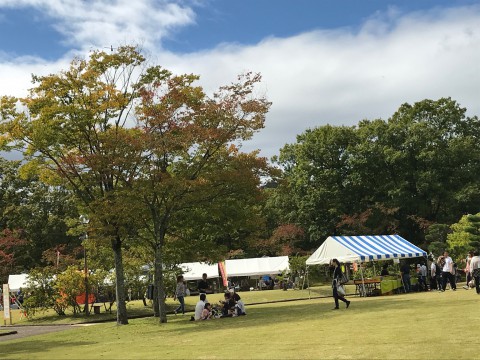
The venue was the large lawn area of the Echizen Pottery Village.
"Minatoma" means a boatslip located in Iriomote Island. The song is a lilting Yaeyama Islands' folk song. (Yaeyama Islands: Ishigaki, Taketomi, Iriomote, Kohama, Kuroshima Islands etc.) However, the lyrics were written as satire to criticize officials during the years of poll tax.
The singer is Hidekatsu, who is from Taketomi Island. He grew up in a musical family that his grandmother was a singer of a traditional event of the Taketomi Island. His representative song is "Miruku Munari".
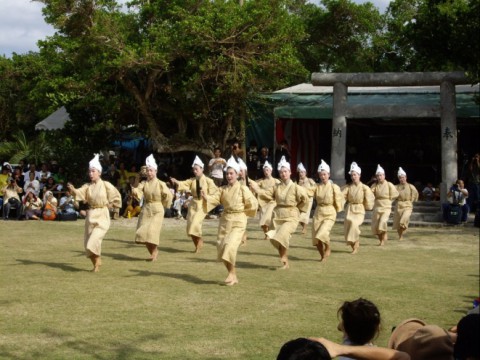
The traditional event "Tanadui" in the Taketomi Island
(The photo is from Okinawa sightseeing information site, Okinawa Monogatari.)
Eisa is one of Okinawa's traditional performing arts, which corresponds to bon dance in Japan's mainland. Youth groups in each district have each style. They parade while dancing during the Bon festival. Although there are various theories on the origin of the Eisa, it is said that a high priest in Buddhism introduced a dance with a prayer to Buddha around 1600, and it developed into the Eisa.
Ryukyukoku Matsuri Daiko is a drumming group, whose performance is based on Okinawa's traditional performing art Eisa, featuring its own choreography adopted an original style of karate, and the dynamic drumstick-work. Now they are representative of Okinawa and are very popular with young people. The group was established by young people of Okinawa City in 1982 and since then, it has beaten out "appreciation for predecessors" that has been valued in Okinawa.
Last year marked the 35th year since it was established, their branches expanded to other countries. Now it has 49 branches in Japan, 27 branches in other six countries and the number of members exceeded 2,500. (as of August 2018) Their activities expand on a world scale.


